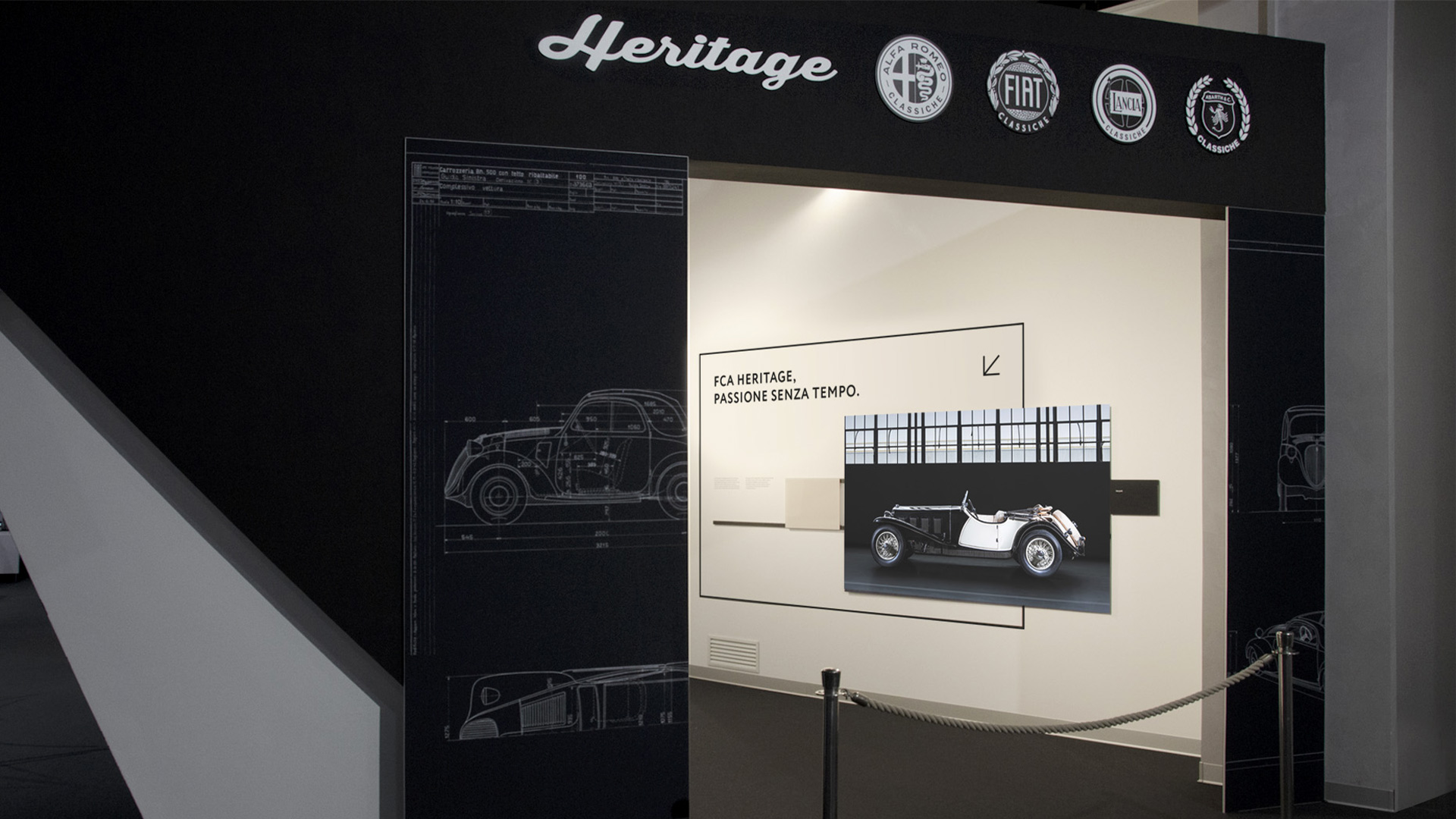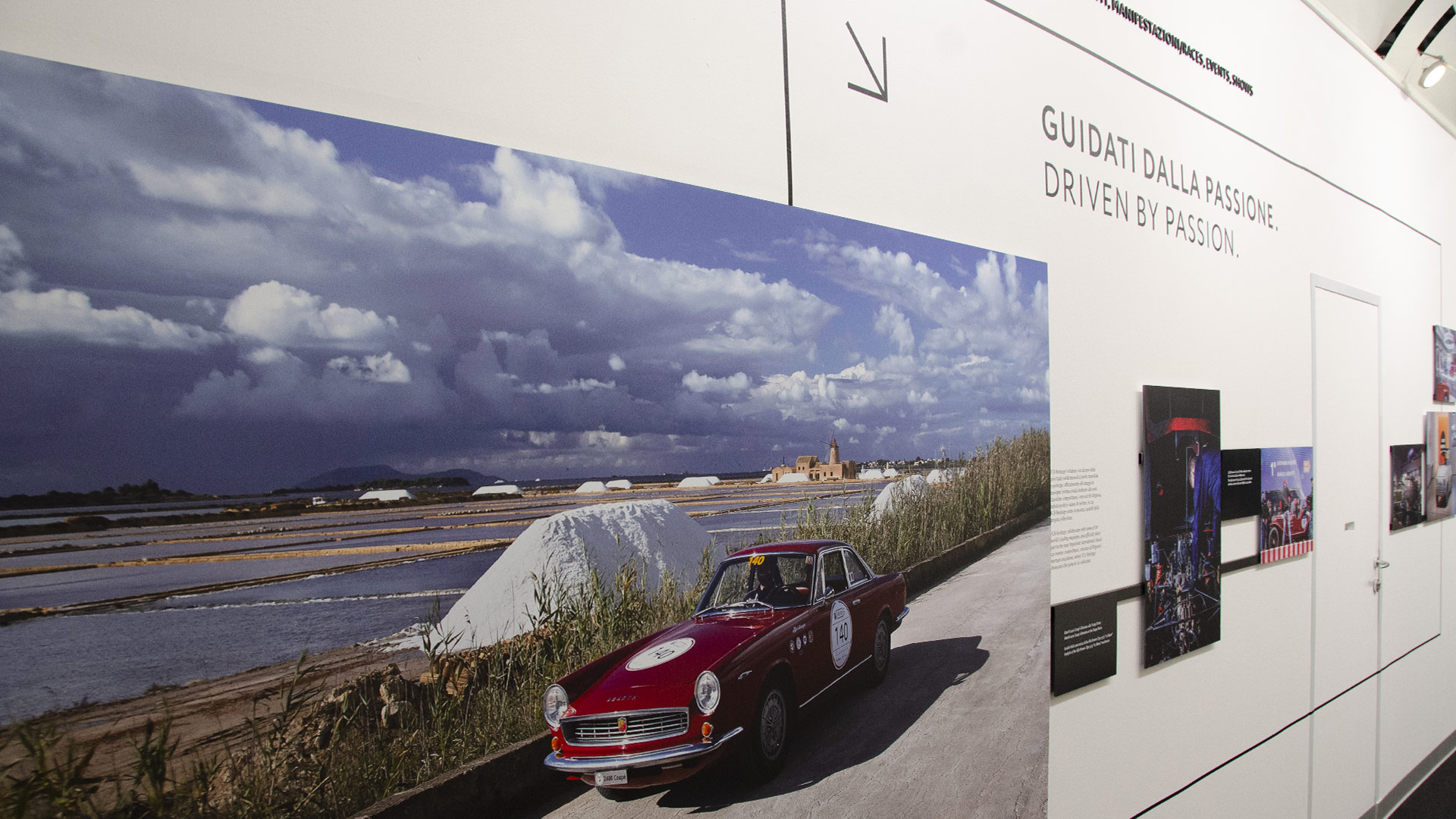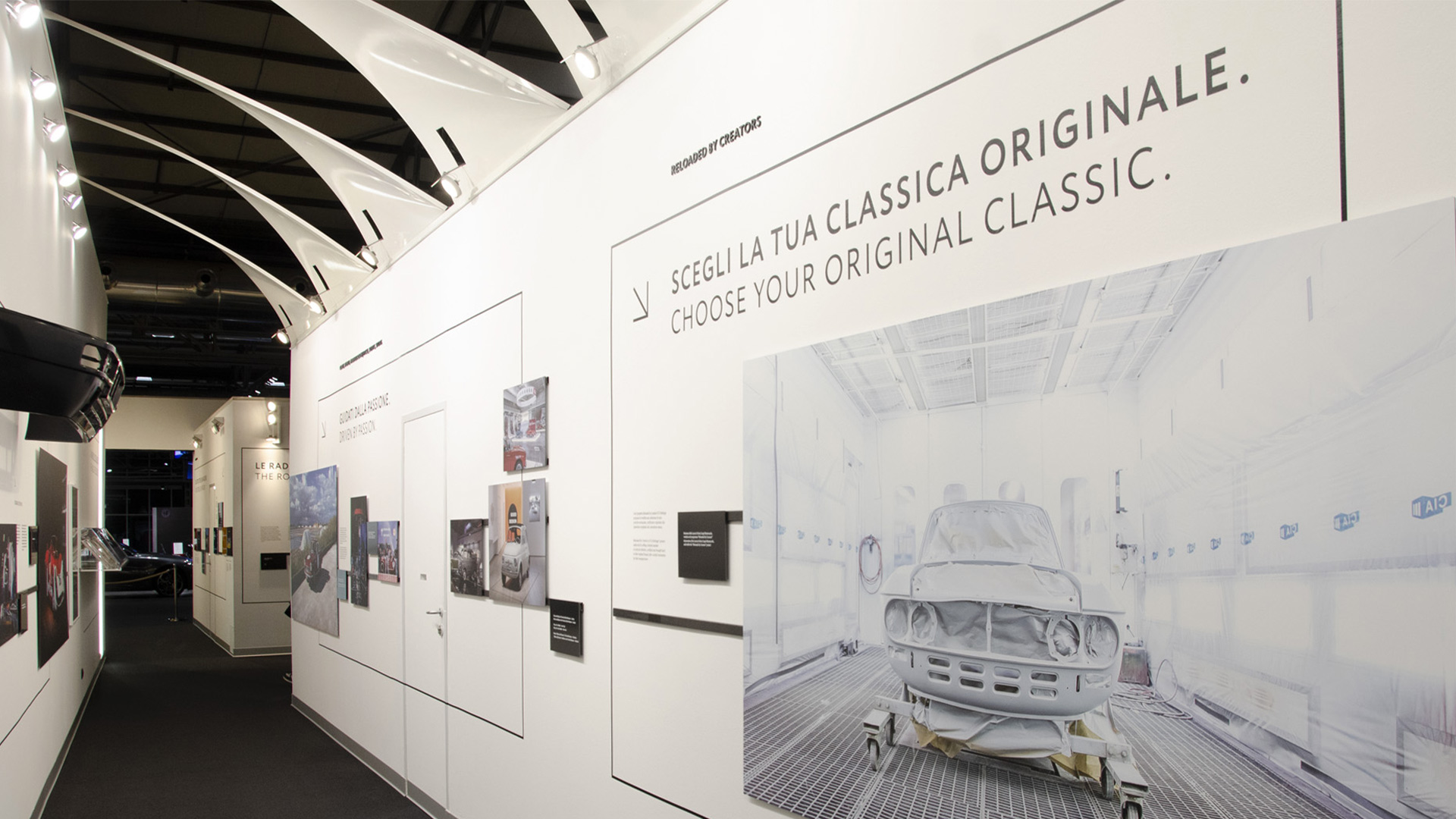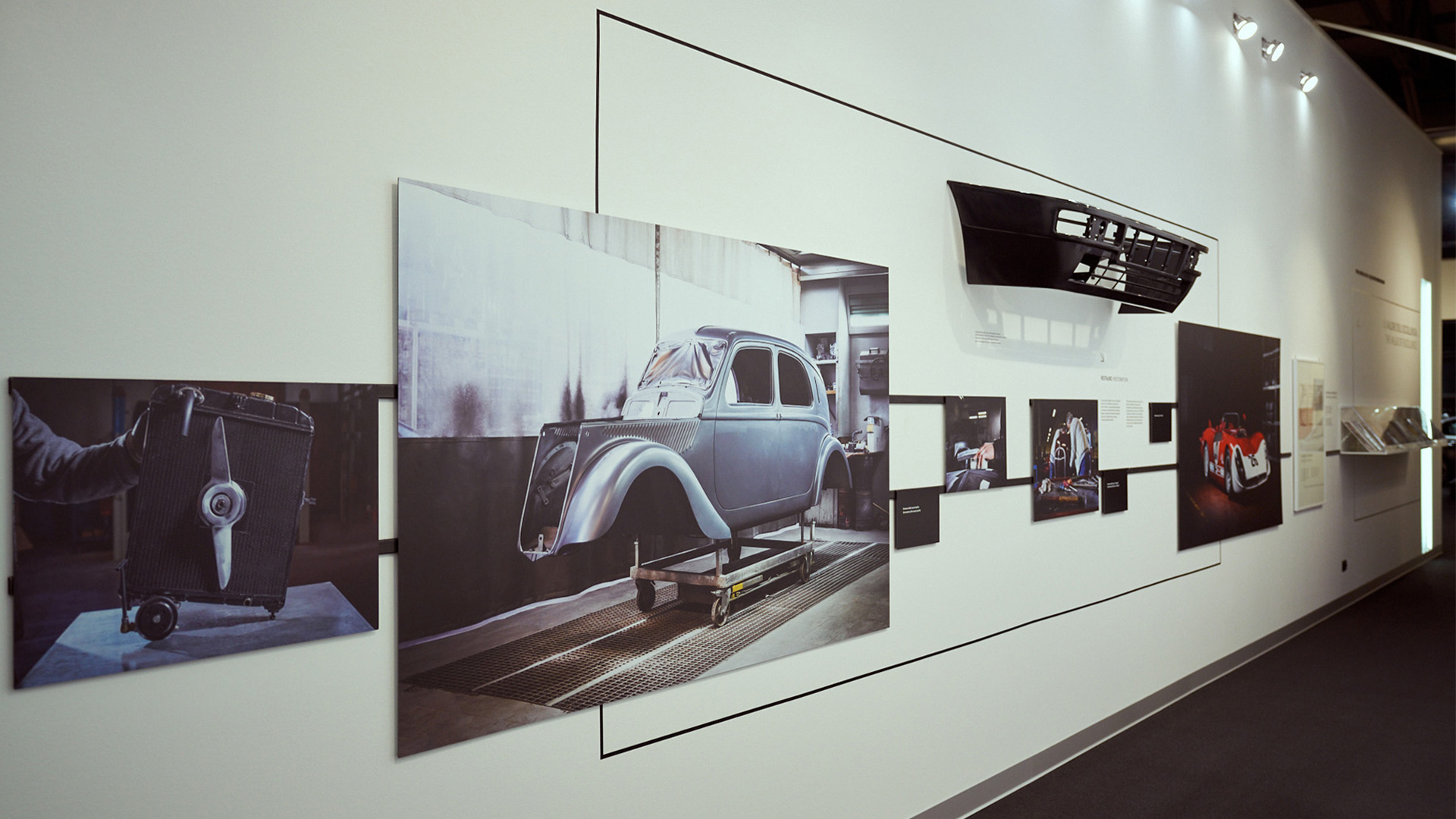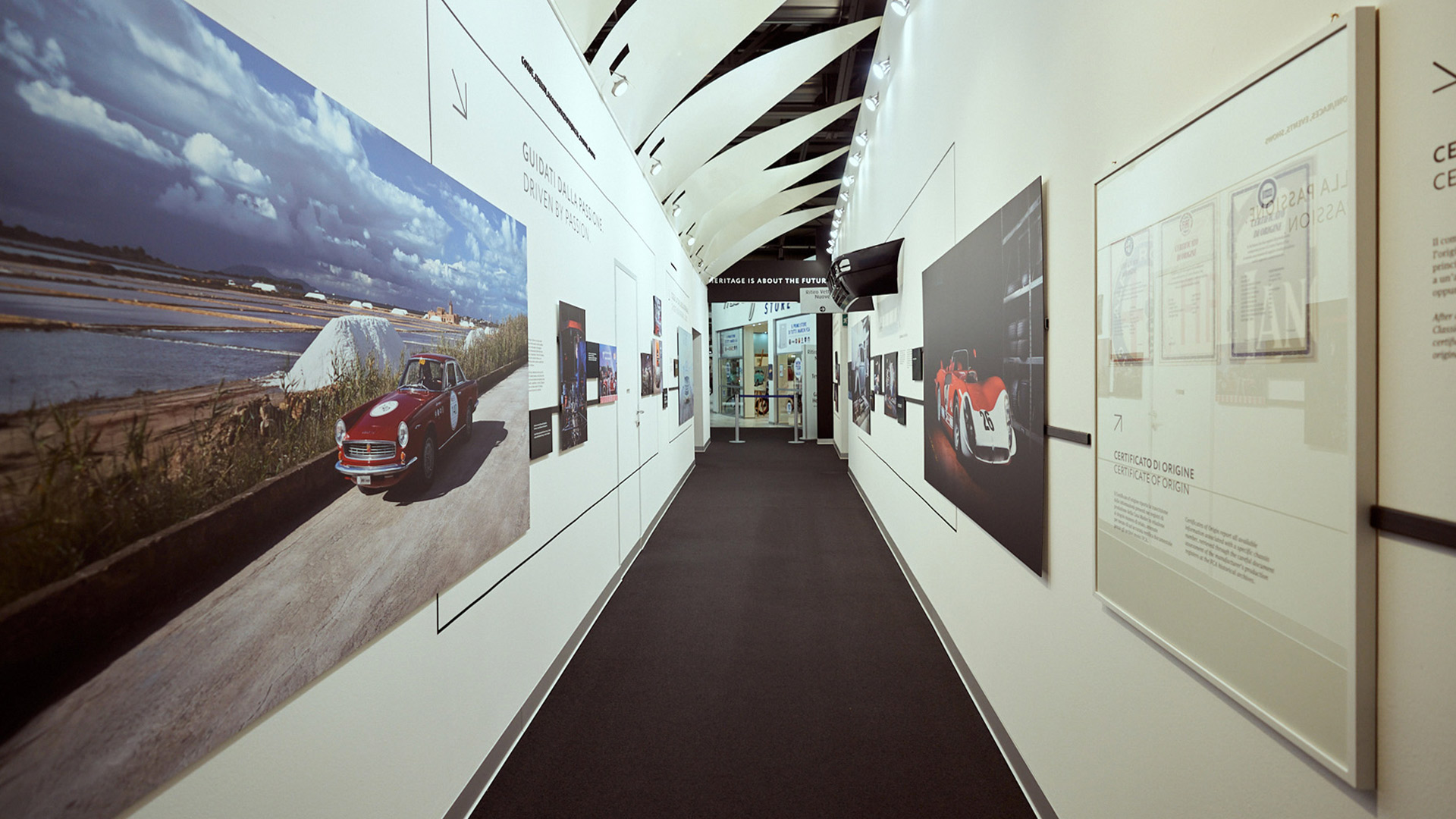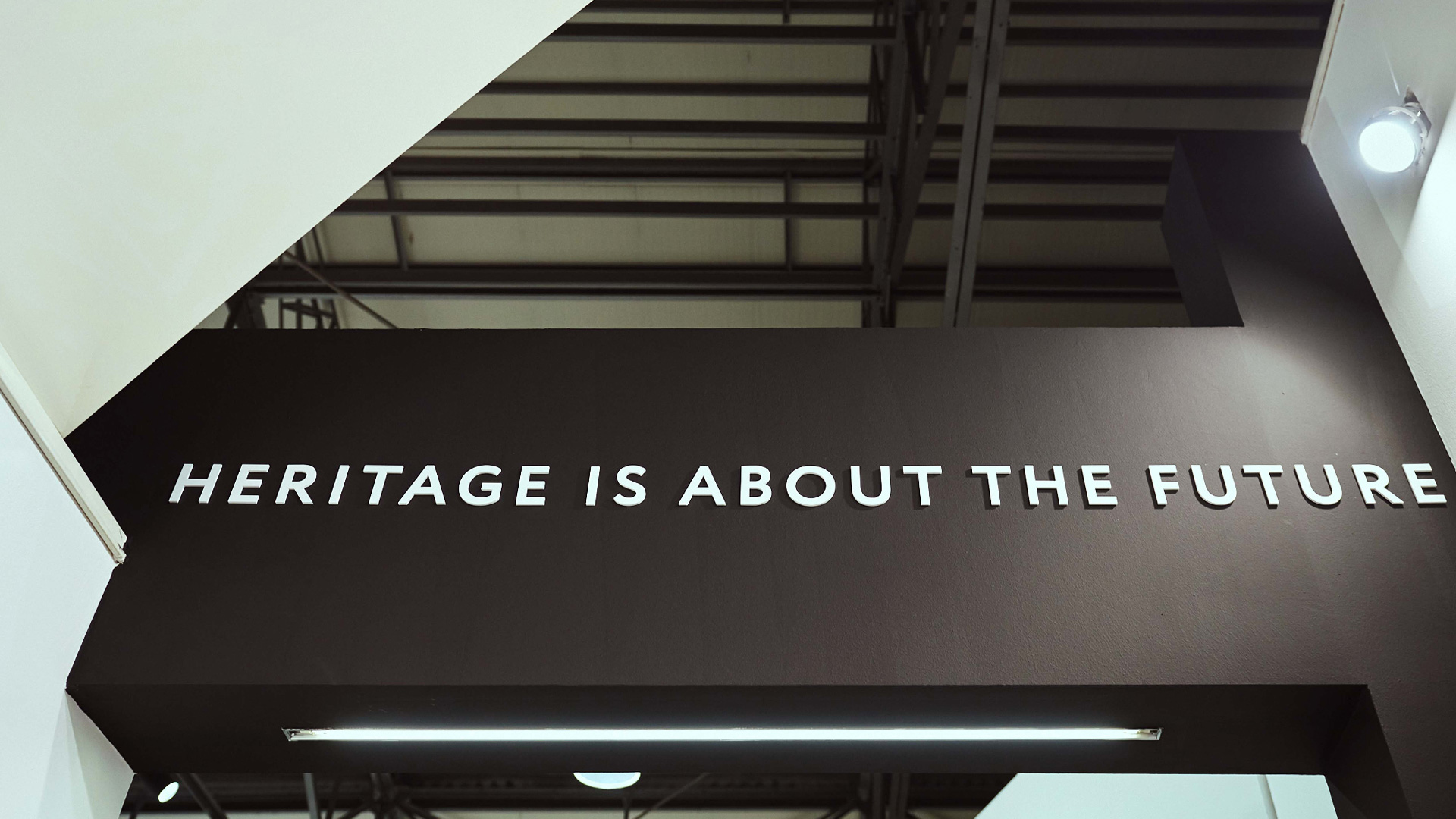Angelini Design was entrusted with the setup of the gallery that presents the world of FCA Heritage, with a storytelling itinerary that showcases the mission, places, services, products and activities of the department directed by Roberto Giolito. The gallery was presented during the prestigious Automotoretrò, and is only the first example of a format that will be reinterpreted for events scheduled all over Europe, helping to introduce FCA Heritage to collectors and enthusiasts from all over the world.
The gallery’s minimalist and contemporary visuals effectively interact with the exhibits, as well as with the original ceiling of the 1939 factory that is now home to the Mirafiori Motor Village. This visually enhances the constant relationship between past and future, one of the crucial principles behind FCA Heritage. Black and white dominate the layout, while the geometric lines that stand out in the graphic format almost become bi-dimensional frames, highlighting photographs and titles splashed across the walls in a font that is as strong as it is essential.
The entrance is made up of two large panels, which showcase the technical drawing of a Fiat Topolino. Almost like a side scene, the two walls appear to open up and invite visitors to discover a journey that is rich in stories, information and curiosities about the world of FCA Heritage.
The walls of the exhibition space feature images that represent the various themes of the gallery, while short texts present the department in a way that is both brief and complete. The photographs are printed on Dibond sheets, and hung on the walls with a temporary solution that allows them to be moved according to specific setup requirements, flexibly adjusting to the project’s evolutions. This ensures a functional modularity and ties in with the elegant industrial vibe of the project, which reaffirms the strategic connection between historical and contemporary brands.
A showcase protects the certificates produced by FCA Heritage and other documents, along part of the right wall; on the left, a sewing machine – dating back to the time when the Mirafiori Motor Village was Fiat’s workshop for car upholstery – is on display against the backdrop of technical drawing reproductions, taken from the Group’s historical archives.
In constant dialogue between past and future, the gallery turns into an ideal place to tell a story of great cultural, historical and industrial value.
